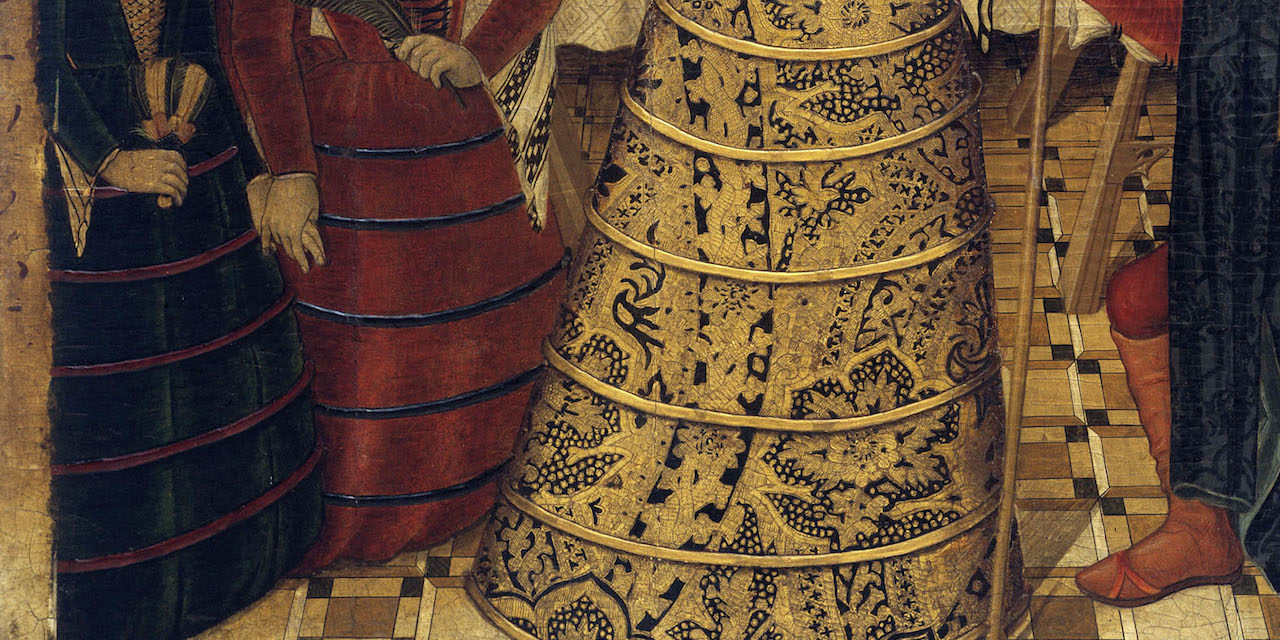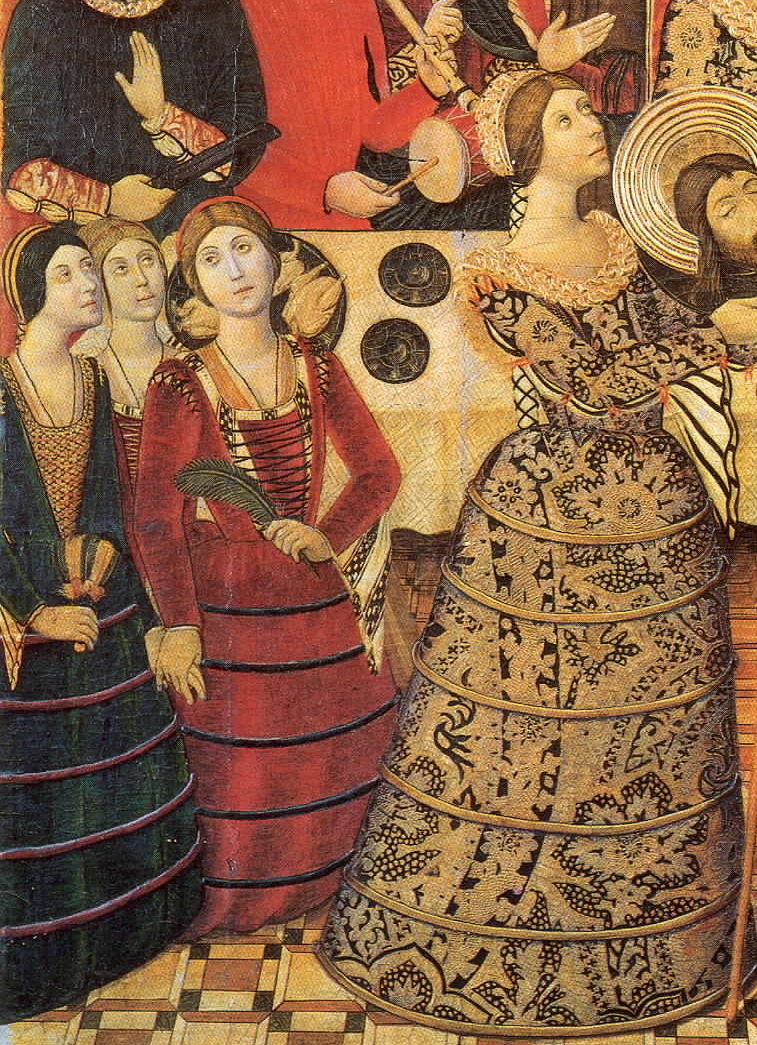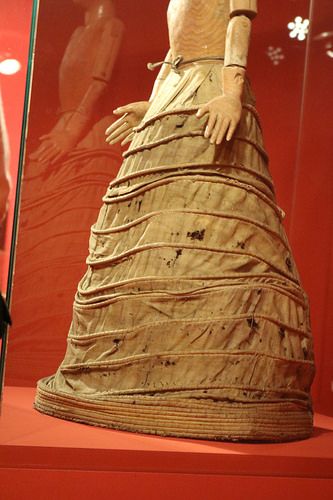A skirt made with a series of hoops that widened toward the feet to create a triangular or conical silhouette, created in the late fifteenth century.
The Details
D
aniel Delis Hill in The History of World Costume and Fashion (2011) describes the origins and function of the Spanish farthingale:
“The Spanish style skirts of the era were constructed as smooth cones that closed down at the center front with ties… Sometimes the center closure was left open to display an underskirt of a contrasting but equally sumptuous fabric. To ensure wrinkle-free draping of the skirt, a structured, conical-shaped petticoat called a farthingale was fitted underneath as a support. Thin lightweight circular bands of supple wood gave the farthingale its contours and strength… further reinforcing an impression of ethereal majesty.” (360)
The retable of St. John the Baptist by Pedro García de Benabarre (Fig. 1) features one of the earliest representations of the Spanish farthingale (indicated by the hoops on the outside of the dress). Nearly a hundred years later, Isabel de Valois, the third wife of Philip II and eldest daughter of Henry II of France and Catherine de Medici continues to wear the typical Spanish farthingale, which creates a very stiff, conical shape (Fig. 2) though the hoops are no longer visible on the surface of the gown.
Blanche Payne writes in The History of Costume: From Ancient Egyptians to the Twentieth Century (1965) writes:
“[the skirt’s] hoops were concealed, but the rigid structure called the vertugade had its origin in this Spanish fashion. The word vertugade is said to be derived from the Spanish, meaning cane or wand.” (259)
Wikipedia describes the origin of the term further:
“The Spanish verdugado, from which “farthingale” derives, was a hoop skirt originally stiffened with the subtropical Giant Cane; later designs in the temperate climate zone were stiffened with osiers (willow cuttings), rope, or (from about 1580) whalebone. The name verdugado comes from the Spanish verdugo, (“green wood”, or the more modern meaning of “executioner”)… Spanish farthingales were an essential element of Tudor fashion in England, and remained a fixture of conservative Spanish court fashion into the early 17th century (as exemplified by Margaret of Austria), before evolving into the guardainfante of 17th-century Spanish dress.”
A surviving miniature 16th-century Spanish farthingale on view at the Museo Etnográfico de Castilla y León in Spain (Fig. 3), shows how the increased size of the hoops create a stiff conical shape.
Fig. 1 - Pedro García de Benabarre (Spanish, d.1482). Herod's Banquet, ca. 1470. Tempera, stucco reliefs, and gold leaf on wood; 197.5 x 125.7 x 6.4 cm. Barcelona: Museu Nacional d'Art de Catalunya, 064060-000. Muntadas collection, purchased 1956. Source: Wikimedia Commons
Fig. 2 - Sofonisba Anguissola (Italian, 1532-1625). Elisabeth of Valois holding a portrait of Philip II, 1561-1565. Oil on canvas; 206 x 123 cm. Madrid: Museo Nacional del Prado, P001031. Royal Collection. Source: Museo Nacional del Prado
Fig. 3 - Maker unknown (Spanish). Verdugado, Late 1500s. Zamora: Museo Etnográfico de Castilla y León. Source: Pinterest
References:
- “Farthingale,” Wikipedia, https://en.wikipedia.org/w/index.php?title=Farthingale&oldid=851680164.
- Hill, Daniel Delis. History of World Costume and Fashion. Upper Saddle River, NJ: Pearson Prentice Hall, 2011. http://www.worldcat.org/oclc/768100950.
- Payne, Blanche, Geitel Winakor, and Jane Farrell-Beck. The History of Costume: From Ancient Mesopotamia through the Twentieth Century. 2nd ed. New York: HarperCollins, 1992. http://www.worldcat.org/oclc/659908345.













